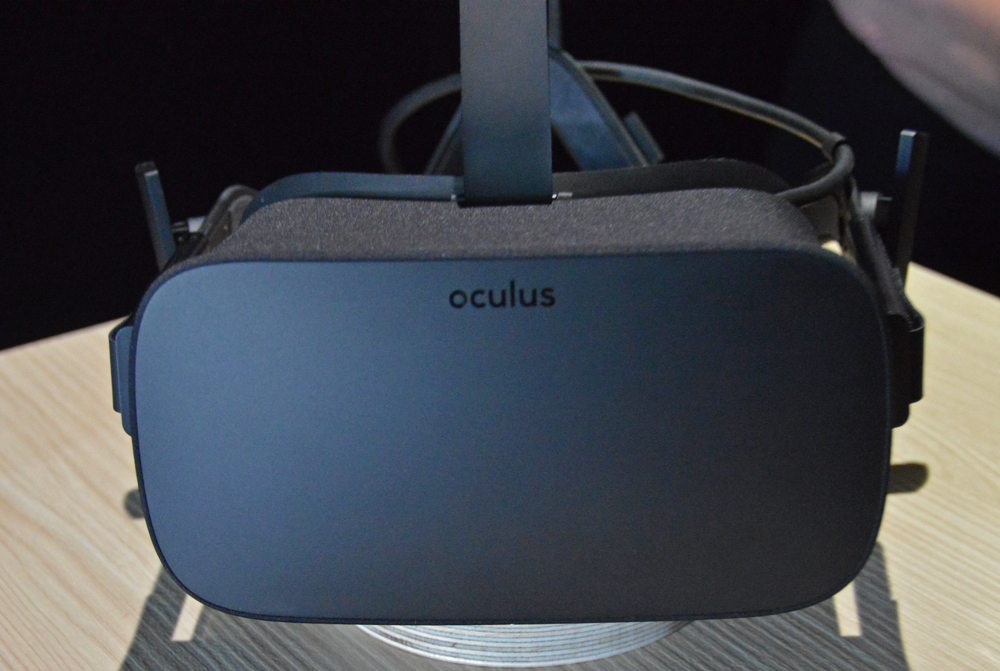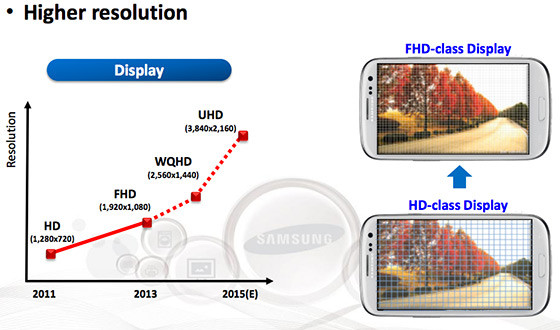At E3 I found myself blown away by the quality of the improved displays on what we assumed was the final version of the Oculus Rift CV1. They had seemingly better color, darker blacks, and the screen door effect was no longer an issue – it was everything we could have asked for… but what if I told you it was only going to get better?
As per a blog post on Oculus’ website the CV1 has a display resolution of “2,160 x 1,200 at 90Hz split over dual displays, consuming 233 million pixels per second,” which seems about right given what we saw at E3. However, a conversation with Oculus’ founder Palmer Luckey after the show revealed that we are in store for something even better.

“The display you’re seeing here has been improved over the Crescent Bay,” says Palmer but there was clearly more to be said. Pressing him further he told us “the display technology should actually improve significantly between now and launch.”
***Update: What is below is speculative, and may not be representative of the actual changes to the display. There are other improvements that Palmer could be referring to, such as (as /u/CarVac pointed out) black smearing, fill factor, and brightness that would not involve increasing the resolution beyond what has been previously advertised. What follows is based on a theory extrapolated from Palmer’s quote.***
Palmer wouldn’t elaborate much further on what the specifics of the screens in the final consumer edition were going to be, but we can make a wild guess – Samsung’s planned 4k Super AMOLED screens for mobile devices.

Looking back, a slide from a 2013 a presentation at Samsung’s Analyst Day shows plans for a proposed 3,850 x 2160 UHD mobile screen with a target release date of 2015. The slide also shows the then projected resolution of the company’s upcoming Note 4 – which happens to be the same resolution that the final product shipped with, hinting these plans might be more concrete.
Another more recent report by PhoneArena.com says the site had been tipped by a source at Samsung that the company would begin mass producing “5.9” Super AMOLED screens with 700ppi for the upcoming Note 5 next August.” If true this would explain a lot as to why we weren’t seeing the final screens with the Oculus Rift at E3.
It all goes back to the partnership struck between Oculus and Samsung in mid-2014 that brought about the GearVR. That partnership operated as a two way street, Samsung would receive access to Oculus’ virtual reality software, which would allow them to create the GearVR; while Oculus received rather unfettered access to Samsung’s top in class display technology. It was a deal that has yielded great benefits for both companies. However, because the companies operate separately there are certain things that belong exclusively to their respective owners, namely in this case display technology.
Were Oculus to have shown the rumored Samsung 4k AMOLED screens in the Rift at E3, they would have been tipping off one of the major selling points of the upcoming Note 5 before it’s release. Something this is a big no no as far as the SEC is concerned (and likely Samsung’s legal and PR team), hence why we saw different screens at E3.
It seems likely that we will see the actual final consumer Oculus Rift at Oculus’ conference, Oculus Connect 2, on September 23rd-25th. If Samsung’s press conference schedule last year is any indication (the Note 4 was announced September 3rd at Samsung Unpacked) we will likely have seen the Note 5 by then (and presumably the consumer version of the GearVR) meaning that Oculus will have free reign to speak about the final new screen technology.
Until then at least we have one new thing to speculate about and that is enough to keep this hype train moving.
END OF WILD SPECULATION
UPDATE: There are, of course, a number of other improvements that Palmer could have been referring to here. Improvements to the “display technology” could easily be things like artifact reduction – and this seems to be the more likely case.


![[Updated] Oculus Rift Display to Improve Between Now and Launch Says Palmer Luckey](/content/images/size/w1024/format/webp/2015/06/Oculus-CV1-Display-4k1.jpg)



























